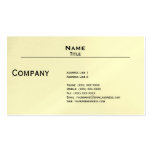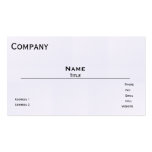Encryption is a process used to scramble data so that it is unreadable by a third party. When you log into your bank account, for instance, data is encrypted and "locked" by your computer using a secret key. It is then sent to your bank, and "unlocked" by your bank, using its secret key. Every exchange of data works this way, keeping your information safe from prying eyes. SSL and TLS protocols are the means whereby that data is kept secure. So how do you know if the information you are sending and receiving is secured by either SSL or TLS?
Suggestions
Checking for SSL or TSL (Internet Explorer)
- Look in the address bar of your browser and make sure the website address starts with https://. This stands for Hyper Text Transfer Protocol Secure. Web pages that begin with http:// are unsecured. (If you use Mozilla Firefox, see Section 2.)
- Click "File" and then "Properties."
- Note the protocol is "HyperText Transfer Protocol with Privacy" and the connection shows 128-bit encryption. This is very good encryption, and you can be sure your data is safe. Click "OK" to close.
Checking for SSL or TSL (Firefox)
- Look in the address bar and make sure the address starts with https://. This stands for Hyper Text Transfer Protocol Secure. Web pages that begin with http:// are unsecured.
- Click "Tools," then "Page Info."
- Select the "Security" tab in the dialog box and note that under "Technical Details" it reads "Connection Encrypted: High Grade Encryption." The data you send and receive over this connection is very secure. Click the red "X" in the upper right corner to close this box.
Tips
- Many people use a browser developed by Mozilla called Firefox, which has many safety features that go beyond other browsers. Additionally, there are small programs you can install that work inside Firefox called plug-ins or add-ons. One of these add-ons, called WOT, will tell you if the site you are about to go to is a trustworthy site. There is even a plug-in that will guarantee your safety when doing trade with many online businesses. Check out the Resources section for information on Firefox.
- It is easy for hackers to set up encrypted pages, so keep in mind that just because a page is encrypted does not mean you should send private information over it. You should know the party to whom you are sending the data and check the address completely. For example, if you receive an email asking you to update your account information and includes a link for you to click, it is most likely a phishing scam (fishing for private information). As an example: https://support/paypal.com.ng is a site in Nigeria (note the ending of the address: .ng), so you must be sure you trust the site that you are navigating to. Most financial institutions do not send emails asking for you to update your information anymore because of the email scams in the past. If you know the party you are communicating with, and you are sure that you are sending your information out over a secure link, you will enjoy the worry-free convenience of doing business online.
The Executive Suite
______________________









No comments:
Post a Comment